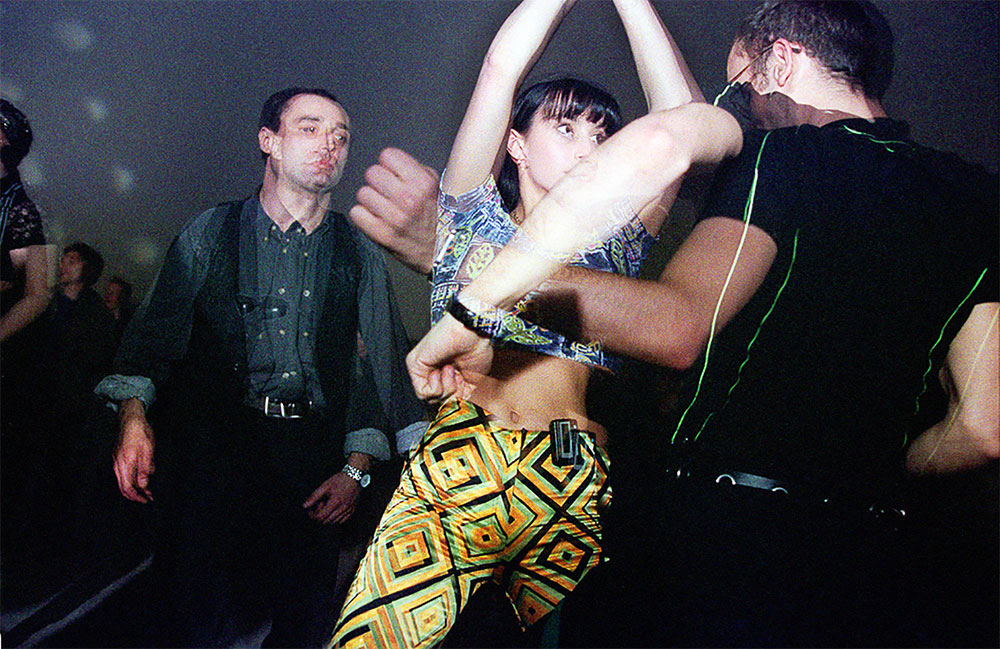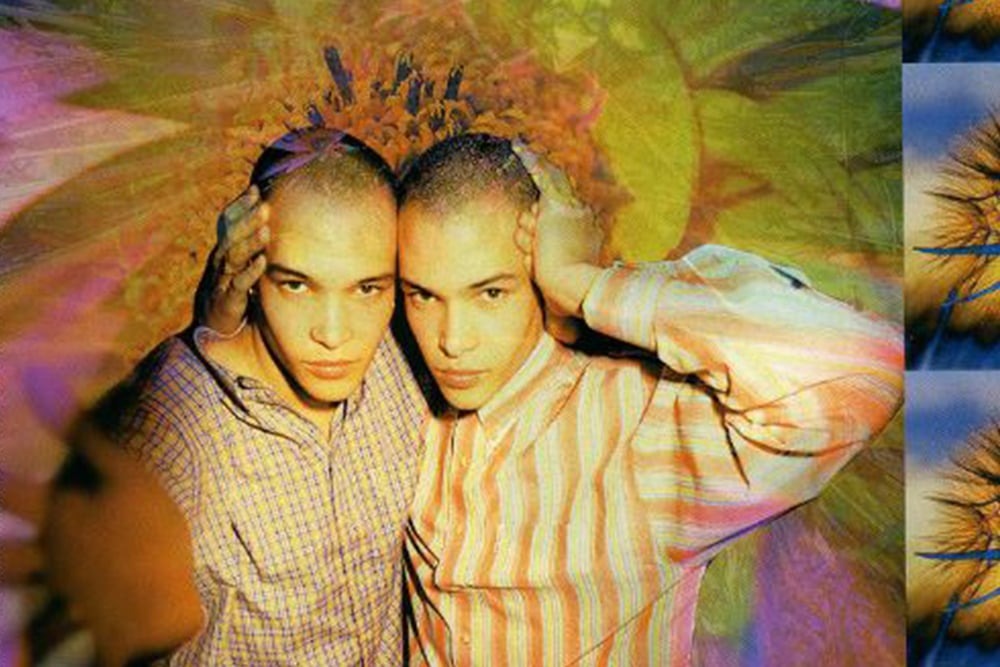How soon can you look back and make sense of history? In 2010 Leonid Parfenov, the acclaimed Russian journalist and TV presenter, chronicled the Russian 90s in his book Recently: Our Era. 1991-2000 (Namedni: Nasha Era. 1991-2000), an encyclopedic compendium of the turbulent politics and cultural artefacts that made the decade. We reproduce some of the highlights here with kind permission of the author.
Kiosk
Capitalism and free trade were born in the kiosk — a three-by-four-metre trading spot where Russians could buy products, usually displayed in rows. A typical kiosk would sell six to eight types of beer (same for vodka and cigarettes), as well as lighters, pens, safety razors, AA batteries, cognac (Camus and Napoleon), condoms, tampons, fruit juices, Amaretto, German sausages and Italian spaghetti, chocolate bars, chewing gum and vacuum-packed cakes.
Chocolate bars
One of the first changes in the Russian consumer market started with sweets. In 1993 the country was conquered by a triumvirate of chocolate bars — Mars, Snickers and Bounty. These three brands occupied every kiosk and advertising slot on TV. The whole country relished in the “heavenly delight” of Bounty and “thick-thick chocolate layer” of Snickers.
New Russians
The phrase “new Russians” is similar to “new money”, and refers to the beneficiaries of Russia’s brand-new capitalism. A raspberry-red jacket, a man’s purse (wristlet) and a chunky chain with a gold cross are some of the attributes of “newrussianess”. At the very least, they owned: a flat no less than 200 square metres, renovated in western style; a red-bricked dacha no less than two storeys high on at least half a hectare of land; an inomarka (foreign car) – ideally a Mercedes 600. A typical New Russian wore Versace, spent his holidays abroad, spent thousands of dollars at a time and was constantly surrounded by guards.
Herbalife
In 1993 the first ever weight-loss product arrived in Russia. In the west, Herbalife was seen as medical quackery. In Russia, however, the population was divided into those who believed it worked and those who didn’t. Those who did trusted Herbalife completely, thinking it would clear the body from all toxins. In Moscow alone, 20 tonnes of this magic remedy was consumed every month.
Holidays
During the Soviet era, citizens could not travel abroad without official permission. A new law in 1993 meant that Russians could leave the border for the first time. Seaside resorts in Cyprus, Turkey and Egypt were hotspots for “new Russians”, and menus in Russian became available in expensive hotels such as The Four Seasons and the Ritz. The freedom to travel allowed Russian tourists to misbehave: they acquired a reputation for travelling in large groups, drinking, shouting across restaurants, tipping badly and turning hotels upside down.
Abibas
While the wealthy wore branded clothes in Russia with pride, the not-so-wealthy Russian wore fakes. By the mid-90s there were more fake brands produced in eastern Europe than originals in the west.
Collectible gum
The mass-imported consumer good and most accessible aspect of the western lifestyle — chewing gum — quickly conquered Russia. Collectible coloured inserts inside each packet became a craze for school kids from the 3rd to the 7th grade who collected, traded and played with them.
Euro-refurbishing
After the communal flats of the Soviet era, accommodation became private in the 90s. Flats were no longer exchanged but bought and renovated in the style Russians imagined was popular in the west. This was known as evroremont, or “Euro-refurbishing”: sealed double-glazed units instead of windows; jacuzzis instead of bathtubs; ceilings with halogen lights bulbs; floors covered with branded parquet; and each room equipped with an air conditioner or humidifier. Legend has it that some had golden door handles and urinals.
Ivanushki International
Ivanushki International was the third successful boy band to hit the pop music scene after Laskovij May and Na-Na. The three-piece, consisting of a gentle poet, a mischievous ginger and a kind-hearted athlete — none of whom were actually named Ivan — propelled pop music in Russia and drove the teenage girls crazy.
Mobile phones and pagers
In 1994 mobile phones became a must-have for every serious politician, businessman or gangster. A Motorola, the phone used by pizza delivery boys in the west, was worth the price of a Russian car, and each phone call was paid both by the caller and receiver. The pager — a mini device used to send and receive text messages – was 10 times cheaper than a mobile phone, becoming the most popular new communication product of the megapolis.
Santa-Barbara
In 1992 the Russian state TV channel Rossiya began showing the first ever soap opera in Russian broadcasting history. The American series Santa-Barbara introduced western soap operas to Russia in the same way MTV introduced western music. For the next 10 years and 4 months, Russians would follow the characters’ lives like many others across the world, until they could no longer separate fiction and reality.
МММ
All financial pyramid schemes rely on advertisement. The ad campaign by MMM, Russia’s notorious Ponzi scheme, attracted 10 million naive Russians who were amenable to its amusing “life stories”. These included that of Lyonya Golubkov, a digger who, after investing in the scheme, could afford to buy a house, a car and a new pair of boots for his wife Rita.
Lycra
Lycra (spandex in Canada and USA) was created by Dupont corporation. Combined in small quantities with other fabrics, the artificial fibre turns into a fashionable bodycon material. The most radical clothing such as g-strings and crop-tops become extremely popular among the female population of Russia from 1993.
Victor Pelevin
When this famously reclusive author’s third novel Generation P (translated as Homo Zapiens or Babylon in English) was published in 1999, it became the most talked-about book of the 90s. The book, which painted a portrait of a decade ruled by advertising, featured Borises Yeltsin and Berezovsky and Alexander Lebedev, among other famous figures, as well as the ghost of Che Guevara, who is summoned by the protagonist, Babylen Tatarsky, a kiosk seller-turned advertising copywriter.








